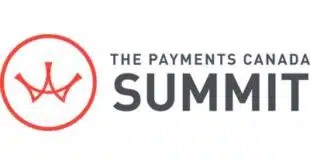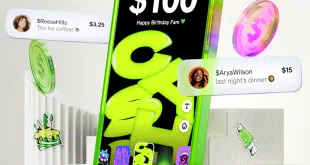Visa and Mastercard are the world’s premier networks for card transactions. Can they afford to rest content with that distinction?
It’s safe to say that most readers of this story have spent most of their adult lives with plastic tokens branded by Visa or Mastercard in their wallet. The two networks are colossi standing astride a seemingly endless flow of retail and business transactions initiated by swipes, taps, or clicks using physical or digital versions of those tokens.
Now, some observers argue, credible threats to that model have emerged, leading the networks to spend big on assets ranging from cross-border processing to fraud management to bill payments. Add to that real-time rails and, lately, data networking and aggregation. Do the card networks still want to be card networks? More to the point, can they afford to be?
These days, network executives talk less about card transactions and more about “money movement”—the transfer of funds from one account to another, whether card-based or not. “We are increasingly using other networks to reach accounts we could not otherwise reach and/or enable new types of money movement,” says Ansar Ansari, Visa’s senior vice president for digital solutions and platform products, in an email response.
That’s despite the massive global reach of the backbone VisaNet system, Ansari says, the central nervous system for some 3.5 billion cards.
Efforts by Visa and Mastercard to expand their money-movement capabilities include a willingness to lay out large sums for non-card payment networks.
In 2019, Visa aced out Mastercard and paid $320 million for Britain’s Earthport plc to get into cross-border transfers in a big way. Mastercard answered last year by shelling out nearly $3.2 billion for the account-to-account business of Denmark-based Nets Group—the biggest M&A deal in Mastercard’s history.
But these acquisitions are only two deals in an expensive three-year quest by both networks to move into payment flows beyond their foundational card businesses. Mastercard spent nearly $1 billion in 2017 to move into real-time payments by snapping up the United Kingdom-based Vocalink. That move proved timely, as Vocalink is providing much of the technology for The Clearing House Payments Co.’s fast-growing fast-payments facility.
“We’re focused on providing consumers, governments, and businesses choice in how they pay and get paid,” says Ron Schultz, Mastercard’s executive vice president for payment flows.
A ‘Multi-Rail Strategy’
But the move triggering the most comment is Visa’s $5.3-billion offer for Plaid Inc., a data network that connects fintechs with consumers’ bank accounts. Data networking—or data aggregation, as some call the business—is a behind-the-scenes activity supporting some of the flashiest names in payments, allowing such services as Square and Venmo to access users’ bank accounts to verify funds and move money.
Plaid is a crucial player in this business, reaching 10,000 financial institutions in the United States and 14,000 globally. Some 25% of all U.S. bank accounts are being accessed by at least one fintech app via its connective tissue—its application programming interface.
The business itself is nothing new, but Plaid and some of its competitors have launched APIs to replace an older and cruder method known as “screen scraping” to access accounts (“Open Banking And Its Friends,” September).
That technical sophistication can make the authorization and process of money movement much slicker, particularly as more financial apps access more accounts. But Visa wasn’t the only party that noticed that angle. It announced the deal a year ago, and there things stood for months as the coronavirus ravaged much of the world. Then, in November, the Department of Justice filed suit to stop the transaction.
The government’s case is that Visa wants to buy Plaid to stop it from potentially using its technology and connections to compete with Visa in debit networking. Visa denies the claim.
Mastercard soon countered with a similar gambit—an $825-million offer for a rival data network, Finicity Corp. That deal cleared the DoJ and the Federal Trade Commission and was expected to close by Jan. 1. After all, by definition there can be only one monopolist. “The acquisition of Finicity fits right into our multi-rail strategy. More to come over time,” says Mastercard’s Schultz.
Industry observers are split on whether a company like Plaid, with its extensive reach and API connections, could serve as a new rail for payment transactions. Some point to the direct access Plaid would provide to where the money is.
The Plaid deal “could help Visa tap into bank accounts,” says Jared Drieling, senior director of consulting and market intelligence at The Strawhecker Group, an Omaha, Neb.-based consultancy. Visa, he adds, is looking ahead and “hedging [its] bets, trying to hedge [its] current position.”
That’s what troubles retail executives, many of whom have long suspected Visa’s motives. They are the likeliest to agree with the DoJ’s case. By opening new channels for money movement, “open banking is probably one of the biggest competitive threats to Visa in quite some time,” says an executive with a major retail chain who asked not to be named. Open banking is the general term for the business companies like Plaid and Finicity are in.
As for the DoJ’s theory that Plaid could build a network that could compete for debit business, “I’m quite confident that was in the works,” the executive says.
Others don’t buy the contention that Visa enjoys an unassailable dominance in debit. So buying Plaid to stop it from using its technology to build a rival—albeit unprecedented—network wouldn’t make sense, they argue. “It’s a pretty aggressive case for the DoJ,” says Eric Grover, principal at the Minden, Nev.-based consultancy Intrepid Ventures. “They’ll have a hard time making it in court.”
Time will tell who’s right. What’s clear is that Mastercard has acquired—and Visa may acquire—open-banking technology that can forge new routes for payments that can lie in tandem with the existing card rails.
‘It’s Conversational’
But it’s not just in open banking that the two big networks see their future. They’re also scrambling to carve out a big share of the rapidly developing market for faster payments, and specifically real-time processing (Cover Story, this issue). Mastercard, in particular, has staked a considerable claim in this market with Vocalink.
“They’re in [real-time payments] now. They don’t have the brand recognition, but they’re in it,” notes Aaron McPherson, an independent payments consultant.
Here, Vocalink’s role undergirding The Clearing House’s Real Time Payments service is crucial because what RTP represents is actual money movement in a matter of seconds via a rail distinct from the card networks. To be sure, Visa’s Visa Direct and Mastercard’s Mastercard Send are real-time services but they depend on the networks’ card rails.
Real time payment processing via The Clearing House—and potentially via the Federal Reserve’s FedNow service, which is expected to be commercially available by 2024—enables immediate funding across new rails.
That opens a wide vista of possibilities, from immediate payouts to multiple contractors to bill payments to fast cross-border transfers and refunds to consumers. Plus, “you can send data along with the payment,” says Schultz. “It’s conversational.”
‘A Tightrope’
That may appeal to merchants and corporate clients, but the two big networks still have a core constituency to serve. Created and owned for decades by banks, they have now been publicly held for years. But financial institutions remain their primary clients. That could make it more difficult for the networks to stray far from their original remit.
“Traditional financial institutions remain dependent on the networks, particularly in credit,” notes Patricia Hewitt, principal at PG Research & Advisory Services, Savannah, Ga. “So the networks have to walk a tightrope.”
Still, both networks remain convinced they can pull off that balancing act. Indeed, they may have little choice.
“Visa and Mastercard are looking to a point in the future when the card is not central to payments but the networks they have bring something to the table,” says Sarah Grotta, a senior analyst at Mercator Advisory Group, a Marlborough, Mass.-based consultancy.




